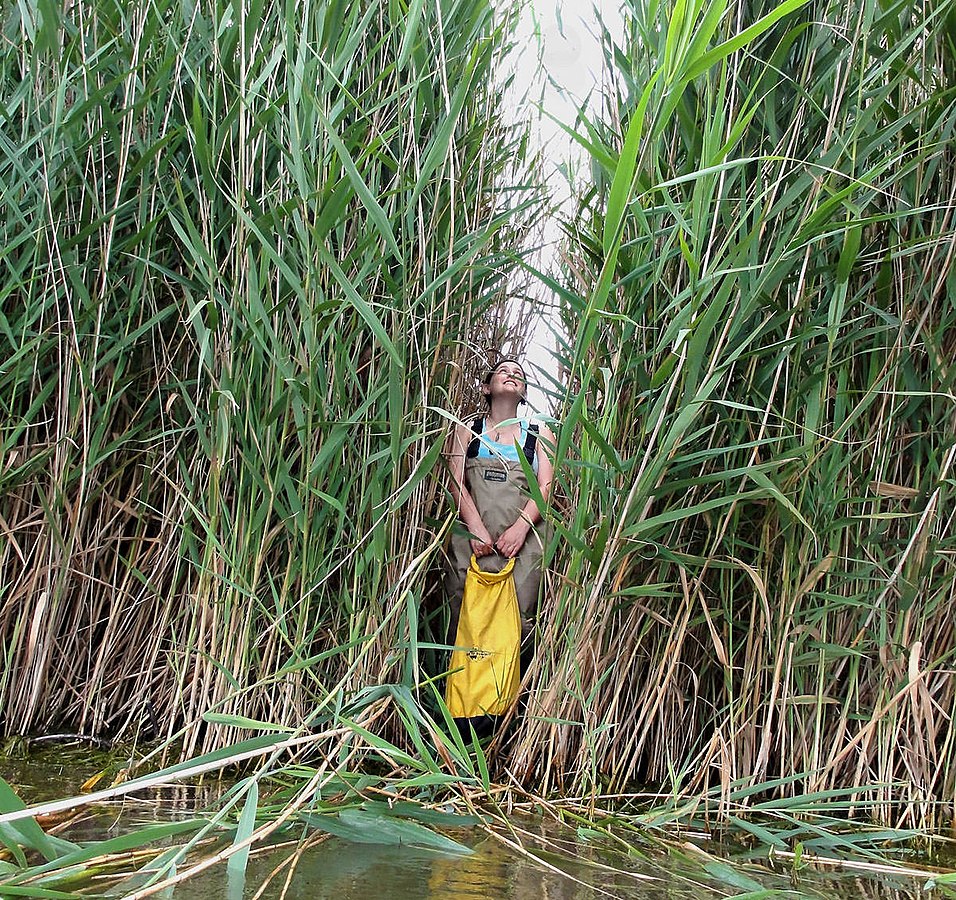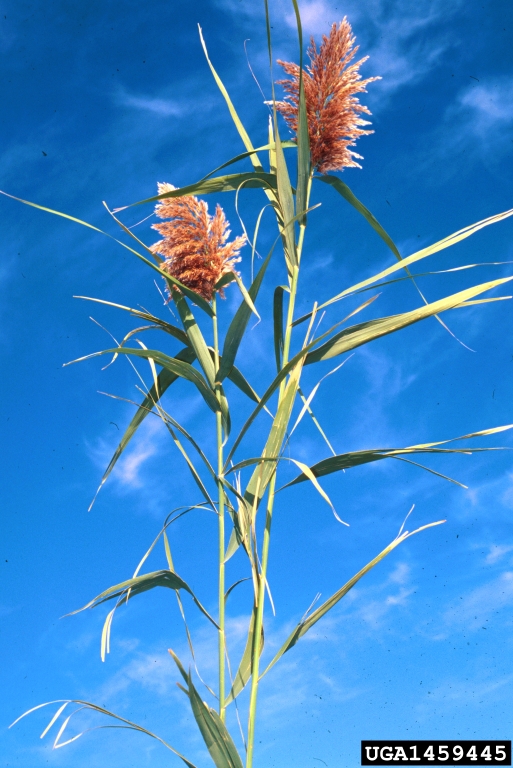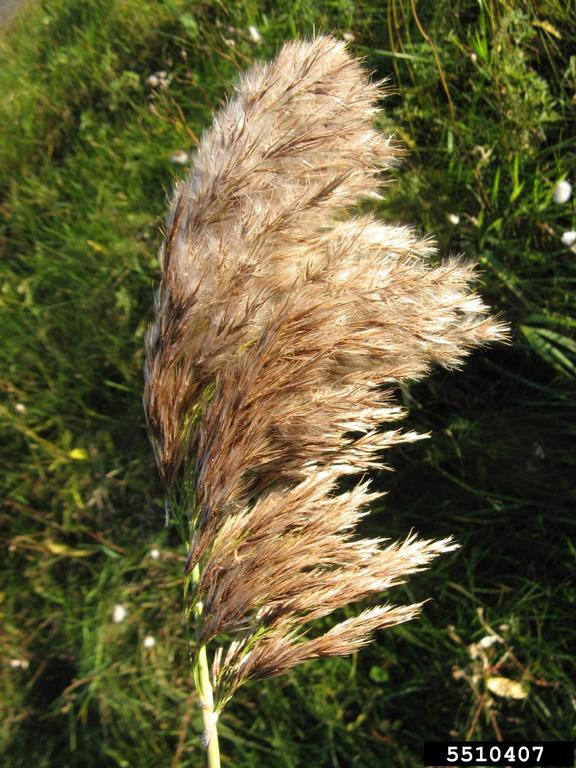European Common Reed

European Common Reed
(Phragmites australis)
Priority: - Prevent / EDRR
Tags: Aquatic | EDRR
Identification and Reproduction
Identification:
- European common reed (Phragmites australis spp. australis) is an aggressive perennial grass that is closely related to the native subspecies, Phragmites australis spp. americanus.
- Stems can reach up to 5 m tall, hollow and are often tan or beige in colour. Stem texture is rough and dull.
- Leaves are flat, pointed, dark green and when pulled back from stem will reveal a ligule that is half membrane and half hairs.
- Infloresence appears as a large feathery panicle. It ranges from 15 to 35 cm long and will mature from a purple colour to a straw-colour. Blooms occur from July through October.
Reproduction:
- It can produce clones from stolons and rhizomes.
- Much of the biomass of the plant is found underground.
- Also reproduces by seed but have a low viability.
- Each seed head is capable of containing 2,000 seeds.
Habitat & Ecology
- This reed was cultivated as an ornamental plant for aquatic and marginal sites.
- It prefers sites with stagnant water but its extensive root mass allows it to withstand dry areas as well.
- Stands are very dense and can reach up to 200 stems per square metre.
- Can thrive in both saline and freshwater wetlands, this includes marshes, sloughs, ponds and ditches.
- It is sensitive to low oxygen levels which can limit viability of seeds and rhizome fragments.
- Currently found in several places in BC: Vernon, Osoyoos, Richmond, Burnaby, Galiano Island and Metchosin.
Impacts
Social:
- Its vigorous growth can create sightline issues and other road safety hazards.
- It can also limit recreational activities such as fishing, swimming and boating.
- Has the potential to invade agricultural land, reducing crop potential.
Ecological:
- This plant is very aggressive and grows rapidly. It outcompetes native vegetation for water and nutrients.
- Its roots also release toxins that suppress and limit the growth of surrounding plants.
- Decreases plant biodiversity.
- Alters the environment, displacing food sources and essential wildlife habitat.
- Causes lower water levels.
- Presence of dead stalks will also increase fire hazards.
Management
Prevention is a high priority for this plant.
- Learn to identify European common reed. Report suspected sightings and avoid moving through the site as this could lead to accidentally spreading the plant.
- Do not buy, plant, sell or trade this plant.
- Clean equipment, clothes and vehicles when leaving infested site to prevent transfer of seeds or plant fragments.
- Because of its extensive root system a combination of control methods may be required for successful management.
- Please report European common reed if you think you have seen it.
Resources
Download the Government of BC Invasive Species Alert for European Common Reed here.
Download Ontario's Best Management Practices for Invasive Phragmites here.
For more help identifying European common reed check out E-flora BC's datasheet on common reed.
Header photo (Botaurus stellaris).





